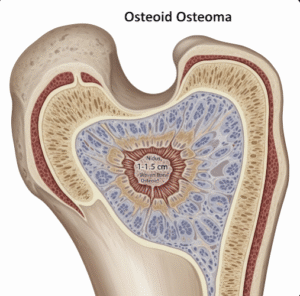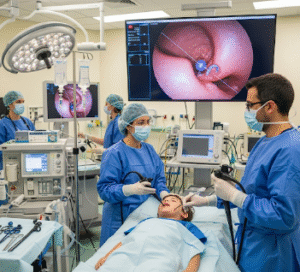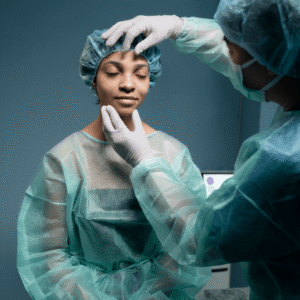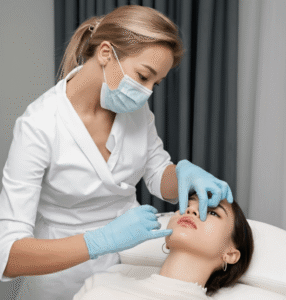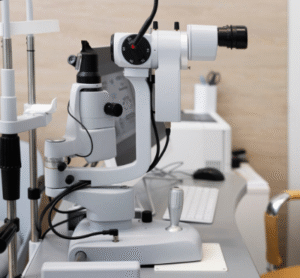Overview
Tooth extraction is a dental procedure that involves removing a tooth from its socket in the bone. It is performed for various reasons including severe tooth decay, infection, impacted teeth, overcrowding, or orthodontic purposes.
In Korea, tooth extractions are carried out in modern dental clinics and oral surgery centers, using advanced techniques and anesthesia options to ensure minimal pain, quick recovery, and safe outcomes.
What is Tooth Extraction?
Tooth extraction is the removal of a tooth from the alveolar bone. It may be:
- ✦ Simple extraction: performed on visible teeth using local anesthesia.
- ➤ Surgical extraction: performed for impacted or broken teeth, often requiring minor incision and bone removal.
Common indications include:
- ✦ Severe tooth decay or infection.
- ➤ Periodontal disease causing tooth instability.
- ✦ Impacted teeth (commonly wisdom teeth).
- ➤ Orthodontic treatment requiring removal of teeth to correct alignment.
The procedure aims to relieve pain, prevent infection, and improve oral health.
What are the Benefits?
Tooth extraction provides several advantages:
✅ Relieves pain and discomfort caused by dental issues.
➤ Prevents spread of infection to adjacent teeth or bone.
✦ Improves oral hygiene and overall dental health.
➤ Facilitates orthodontic treatments and proper teeth alignment.
✅ Prevents complications such as abscesses or cyst formation.
✦ Quick and safe procedure with proper dental care in Korea.
Procedure Details
1) How should I prepare for Tooth Extraction?
Preparation includes:
- ✦ Medical evaluation: review health history, medications, allergies, and bleeding disorders.
- ➤ Dental imaging: X-rays to assess tooth structure, root position, and surrounding bone.
- ✦ Consent and counseling: discuss procedure, anesthesia options, risks, and post-operative care.
- ➤ Medication management: inform dentist of anticoagulants or other medications.
- ✦ Fasting: usually not required unless sedation or general anesthesia is planned.
2) What happens during the procedure Tooth Extraction?
Tooth extraction can be performed under local anesthesia, sedation, or general anesthesia depending on complexity:
➤ Step 1: Numb the area using local anesthesia or sedatives.
✦ Step 2: Loosen the tooth using specialized dental elevators.
➤ Step 3: Remove the tooth carefully with forceps.
✦ Step 4: For surgical extractions, minor incision and bone removal may be performed.
➤ Step 5: Control bleeding using gauze or sutures if necessary.
✦ Step 6: Provide post-extraction instructions and prescribe painkillers or antibiotics if needed.
Korean dental centers use advanced imaging and surgical tools to ensure precise, safe, and minimally traumatic extractions.
3) What happens after Tooth Extraction?
Postoperative care includes:
- ✦ Monitoring: observe for bleeding, pain, and swelling.
- ➤ Pain management: analgesics as prescribed.
- ✦ Diet: soft foods and avoid hot, hard, or spicy items.
- ➤ Oral hygiene: gentle rinsing; avoid brushing extraction site for 24 hours.
- ✦ Follow-up: dentist checks healing, removes sutures if placed, and monitors for infection.
Recovery is typically 3–7 days for soft tissue healing, and full bone healing occurs in several weeks.
Risks / Benefits
Potential Risks:
- ✦ Pain, swelling, or bruising at extraction site.
- ➤ Bleeding or clotting issues.
- ✦ Infection if oral hygiene is not maintained.
- ➤ Dry socket (delayed healing) in rare cases.
- ✦ Rare complications: nerve injury, damage to adjacent teeth, or sinus involvement for upper teeth.
Benefits:
- ✅ Relieves dental pain and infection.
- ✅ Prevents complications such as abscesses or tooth misalignment.
- ✅ Improves oral health and hygiene.
- ✅ Quick and minimally invasive when performed by trained dentists.
- ✅ Safe, effective procedure with excellent outcomes in Korea.
Recovery and Outlook
Recovery after tooth extraction generally includes:
- ➤ Immediate care: control bleeding using gauze, manage pain, and rest.
- ✦ Diet: consume soft, cool foods; avoid hot beverages and hard items.
- ➤ Activity: resume normal activity gradually; avoid strenuous exercise for 24–48 hours.
- ✦ Follow-up: checkup to ensure proper healing and remove sutures if used.
- ➤ Long-term outcome: most patients achieve pain-free oral function, reduced infection risk, and improved dental health.
When To Call the Doctor
Contact your healthcare provider if you notice:
⚠ Persistent or severe bleeding.
⚠ Intense pain not relieved by prescribed medication.
⚠ Swelling, pus, or signs of infection.
⚠ Numbness or tingling around lips or tongue.
⚠ Difficulty opening mouth or eating.
Best Korea Option / Process
Korea provides world-class tooth extraction with:
- ✦ Experienced dentists and oral surgeons skilled in simple and surgical extractions.
- ➤ Advanced dental imaging and surgical tools for precise, safe removal.
- ✦ Minimally invasive techniques for faster recovery and minimal discomfort.
- ➤ Comprehensive pre- and post-operative care, including pain management and follow-up.
- ✦ Safe and effective procedures for domestic and international patients.
- ➤ Multidisciplinary care ensures optimal oral health, rapid recovery, and minimal complications.
Korean centers ensure patients receive safe, precise, and effective tooth extraction with excellent recovery and outcomes.
Highlights of Tooth Extraction in Korea
- ✅ Relieves pain and infection from problematic teeth.
- ➤ Minimally invasive with advanced techniques.
- ✦ Quick recovery with minimal discomfort.
- ➤ Expert pre- and post-operative care.
- ✅ Safe and precise procedures in modern Korean dental centers.


